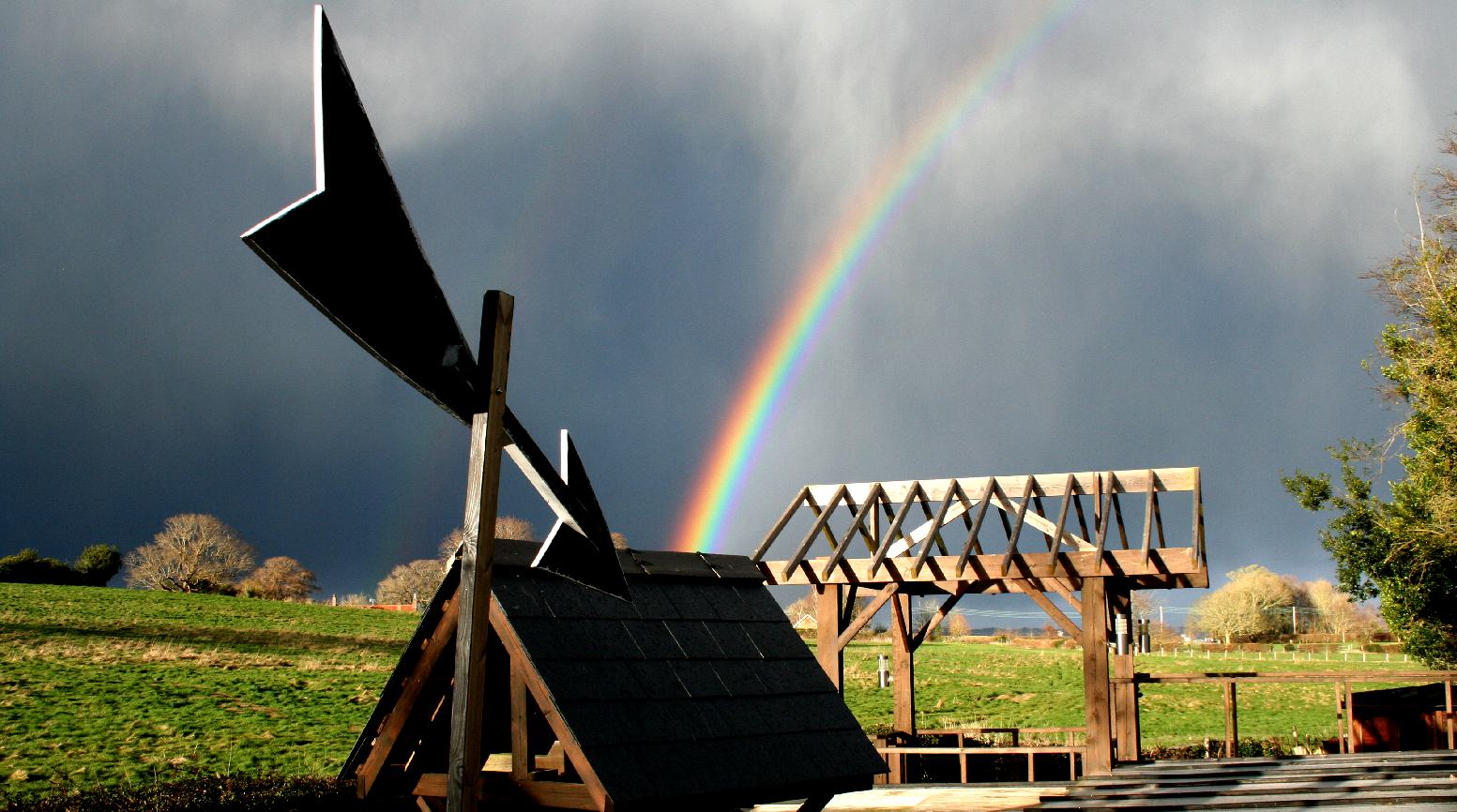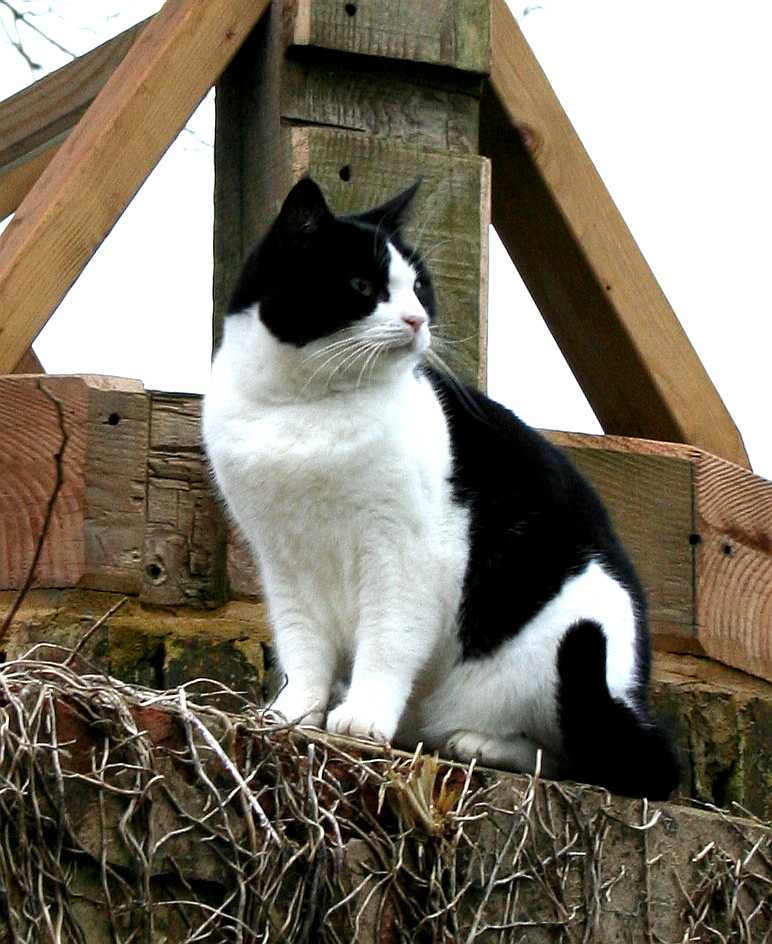|
SOLAR CONSERVATORY EXPERIMENT
|
|
|
A STURDY FRAME - Part of this building was taken down in 1936, but then could be restored as permitted development, and what better use for a solid timber structure, than to generate renewable electricity from solar panels, and lock up carbon in the wooden frame. In fact, you don't need planning permission to fit solar panels to a roof in the UK, since the rules were changed to help meet the targets in the Climate Change Act 1998.
NORTH FACING PANELS - Normally, you'd not have solar panels facing north, in this case north-west. But with a tilting roof, the panels can be made to face south, simply by raising them, turning the frame on its hinges through 90 degrees. It also means that the panels on the other ridge, can track the sun as it passed overhead. On a DIY basis, this is cost effective. It would not be practical to alter an existing roof of an ordinary house. The structural works would cost too much. But, designing solar conservatories as part of new builds is well worth the effort. Saving the cost of tiles, if it is done right. That is what we are hoping to prove with this experiment.
THE COST OF SOLAR PANELS
In recent years the cost of solar panels has fallen, with China now producing around 80% of commercially available units, being artificially cheaply shipped using dirty bunker fuels. There is a move to bring production back to Europe, where the energy used in fabrication is more sustainably generated, and shipping costs are thus reduced, with less pollution to cause acid oceans. In China they burn coal that is imported from Australia.
We plan on installing 24 panels. Twelve will be fixed, and twelve mounted on frames that move. In all, the assembly should generate around 3.6Kw at peak times. In the summer months, that should equate to eight hours of solid energy harvesting. Giving us 3.6 x 8 = 28.8Kw/hrs @ 0.24 pence per unit, that saves around £6.91 pounds a day, or £193.54 pounds a month. Wow!
Obviously, the occupiers of the building would not use so much electricity. Around £2,322 pounds a year, adjusted (rounded down) by 50%, to account for winter months. So, £1161 pounds saved a year. That is more than the average household uses. So, we may have to find a way of storing the electricity, other than in batteries. We are thinking of hydrogen. Because, we don't want to sell to the grid, where there is an electric car to charge. You will appreciate that the lithium batteries in most EVs, are reasonably big energy stores: 21.6 to 43.2 Kw/hrs for a BMW i3. Much more for a big Tesla.
What might be an interesting idea in a setup like this, is being able to draw power from the car's battery, as a load leveller.
DECEMBER 14 2021 - The hinged wooden frames were made in sub-zero temperatures, in between bouts of rain and high winds. Not much fun, and slow going. Because, you cannot work wood that is wet. It does not cut well and screws and bolts bruise the wood, so that they don't really fix as well as when it is dry.
DECEMBER 15 2021 - We didn't want the light hitting the panels before they had a load connected. So they were covered with tarpaulins. With the short working hours and Christmas fast approaching, it is doubtful that much more will be achieved until 2022.
This project was started in September 2021, when the frames went up. In December the tilting frames were made. The remainder of the woodwork for the fixed frames will have to wait until April, judging by the schedule of meetings booked for Nelson in February and March.
JANUARY 25 2022 - Frames for the lower row of fixed solar panels were added. UV protected polythene, as used in poly-tunnels and other agricultural enterprises, prevents water from between the panels entering the battery store and machine house. This is the south facing ridge. Lightfast polythene has a much longer life under the panels. Expect 20 years, and 10 years where exposed.
JANUARY 25 2022 - Solar panels were fitted to the north facing ridge. Normally, you'd not install PV panels facing north, as they'd not catch much sun. But with our system where the panels track the sun as wings, these panels can be tilted to face south. The weather was obliging, overcast, but dry.
JANUARY 26 2022 - Lower frames were fitted to the northern facing ridge. At the moment these are fixed to allow us to gauge the effectiveness of the tilting panels. Later, they may tilt to catch the sun overhead. QVS supplied the polythene sheeting. Ordered on the 25th, we had a delivery on the 26th. These guys are amazing. The same applies to our hydraulic pump, hoses and ram suppliers: FlowFit.
JANUARY 31 2022 - Wiring up the solar panels in banks to make a wing, so that each separate wing can move independently.
JAN 31 2022 - One of the amazing hydraulic power packs from Flowfit. This is a double acting dual solenoid operated pump and flow control system that can be used with twin rams and/or motors, supplied with hand controls on a long cable, that we will augment with a microchip operated sun tracking system that is automatic. These units can be supplied with a level operated valve system. But you need electro/mechanical solenoids in autonomous systems.
31 JANUARY 2022 - We'll need around three times the energy storage that these heavy duty leisure batteries can provide - maybe more. We're looking at lithium replacements, which will be more economical in operation in the long term. Second user car batteries may be an option for householders in the future, where they have run out of range for automotive use. This will only be possible once there is a good supply of lithium power packs, such as when petrol and diesel vehicles are on their way out. In the UK, fossil fueled vehicles are being phased out from 2035. The internal combustion engine emits fumes and particulates that are damaging to the lungs, causing cancer. Especially dirty bus and truck exhausts in cities. Once lithium batteries are fully depleted in terms of a useful working life, they can be recycled. This is the subject of much research, into ways of improving metals recovery: cobalt and lithium.
FEBRUARY 1 2022 - More roof rafters were added and the battery store & machine housing doors were covered, to protect the equipment from rain and damp, that includes such electronic equipment as charge controllers and inverters, to ensure the batteries are not over-charged, or drained, and the DC energy in 24volt banks, is converted to AC mains, 220-240 voltage.
Battery prices vary. A 120amp lead-acid unit will cost around £110-120, while 108amp in LIPO will set you back £360. The LIPO set will last 10 years, against 3 for the LA. Plus, the LIPO will discharge to 90%, while LA's can only go to 50% before irreversible damage occurs. A LIPO stack of 20 batteries will provide 8.2kW/hrs, or 2kW for 4 hours during an evening - at a cost of £2,380. Depreciated over 10 years, the storage cost is £238 per year. The cost of the same amount of electricity from an energy company would be £718 - 3 times cheaper. And during the day, you don't need to store the energy from solar panels - just use it. Thus, solar energy is a no-brainer. Arrangements like this meet the United Nation's sustainability development goals. If all houses in the UK had such systems, our fuel consumption (carbon footprint) would be about one third.
FEBRUARY 1 2022 - Power inverter and waterproof hybrid solar charge controller. We started looking at the wiring, only to discover that because of our unique arrangement, with one set of panels facing north, we'd need 3 charge controllers and 3 inverters. This will provide 3 kilowatts peak. Meaning we can boil a kettle, while still watching a movie on a large LCD screen and have all the lighting on, with a fridge also clicking in from time to time. Other than that, we'll have to re-configure the system, with additional battery storage and extra inversion capacity. The good news is, that any system can be expanded. Inverters or 4kW continuous 8kW peak are now commonly available online. It may be better to have a couple of smaller units, as a failsafe, rather than rely on just one large unit.
FEBRUARY 7 2022 - Sunrise, south-east facing panels with UV protected poly covering to protect the battery store and hydraulic machinery. It is planned to fit more solar panels as this experiment continues. We will also be measuring how much energy is captured as heat within the housing, where it may be possible to duct to other areas of the building, using solar powered fans.
FEBRUARY 7 2022 - Sunrise, viewed from the north, showing UV hardened polythene forming the weather protection for the batter store and hydraulics.
FEBRUARY 7 2022 - South-east facing end of the solar conservatory. This picture shows us how the sun rises (8am GMT) and moves across the movable solar panel wings.
FEBRUARY 7 2022 - Sunrise, winter, showing the frost on the north facing slate roof, contrasted against the sunlight passing through the solar conservatory.
FEBRUARY 2 2022 - Winter sunset, compared to summer sunset (above) a few years ago. Red sky at night, shepherd's delight. Today we ordered a whole bunch of cables and connectors and battery terminals.
RAINBOW 2019 - This is the second time in so many years that a rainbow has appeared over the well that feeds Solar House. The pergola is the same one in the glorious red sky sunset picture above, only viewed from the west, rather than the east. This is the only working well in the village, dating from 1898, according to the dated of manufacture of the bell.
This project resumed in January 2022. We hope that by March the hydraulics will be in place. Then, we'll be looking to install more solar panels. This will take a bit longer than a conventional installation on an existing roof. Because, we are also constructing the roof, and some of the angles are compound.
LEFT - This tree was saved by building a frame around it. It was necessary because the sycamore had grown on a hillside, adjacent to a building set into the bank. But, we love trees, so long as they don't cause any damage to the buildings. You can't get closer to nature than having a tree growing through your building.
RIGHT - This cat lives wild in the location and has done so for over 10 years since at least 2012. He sleeps in various locations around the property (and we don't mind his company), but is not fed or otherwise domesticated. And in fact seems to prefer being totally independent. He is a good mouse catcher!
FAVOURITE WALKS - This famous view is also one of Nelson's much-loved walks. These are the old coastguard cottages, now privately owned, seen from above when walking to the beach from the car park. Who would not want to live with such a beautiful view, the sea winds and waves lapping on the beaches below. But, those picturesque chimneys mean a risk of carbon monoxide poisoning, a problem that has only recently been recognised as dangerous to humans. Copyright © 18 July 2016, all rights reserved.
LINKS & REFERENCE
https://www.qvsshop.co.uk/ https://www.flowfitonline.com/
Copyright © 2022 Cleaner Oceans Foundation.
|







